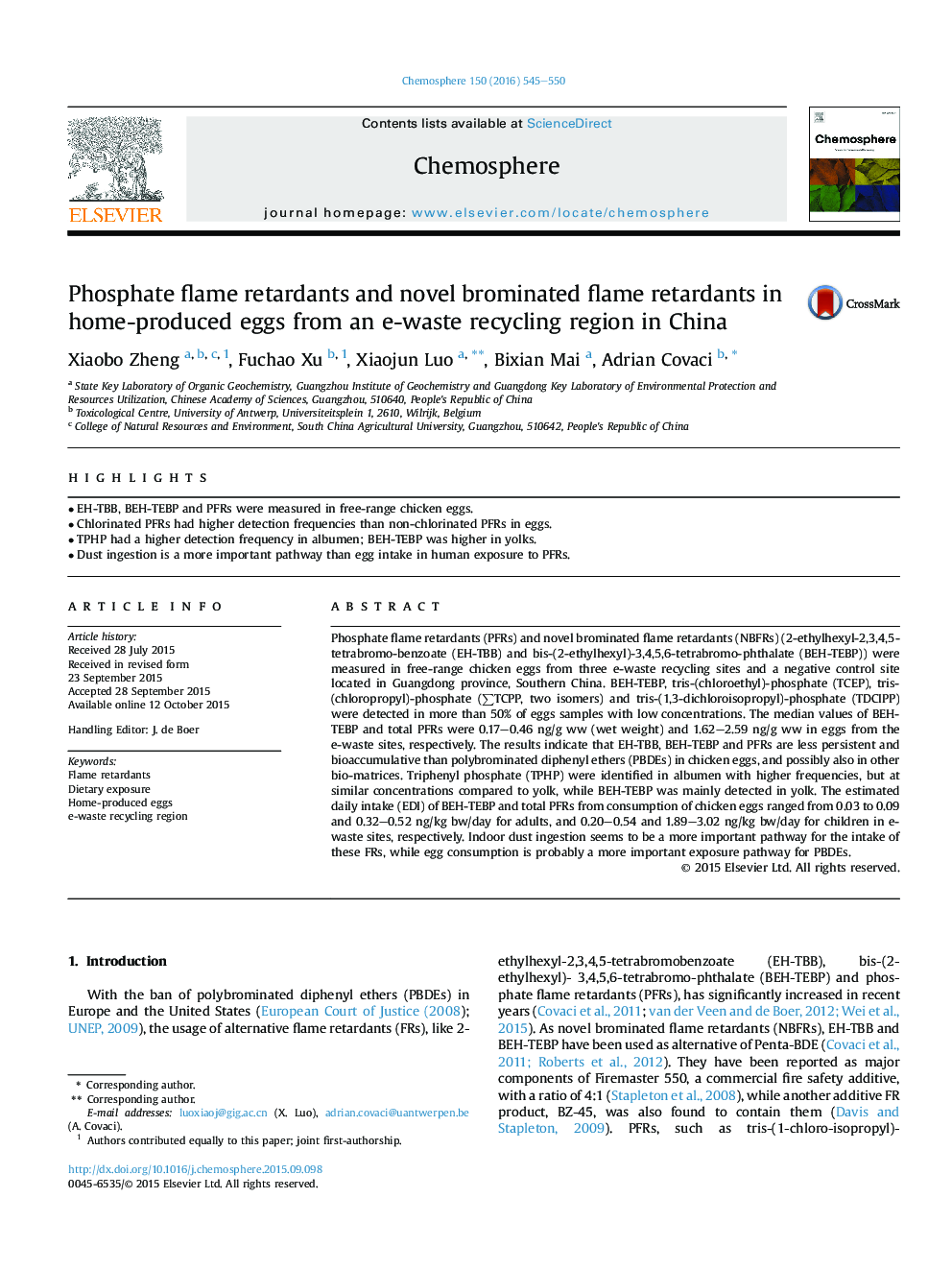| کد مقاله | کد نشریه | سال انتشار | مقاله انگلیسی | نسخه تمام متن |
|---|---|---|---|---|
| 6306936 | 1618821 | 2016 | 6 صفحه PDF | دانلود رایگان |
- EH-TBB, BEH-TEBP and PFRs were measured in free-range chicken eggs.
- Chlorinated PFRs had higher detection frequencies than non-chlorinated PFRs in eggs.
- TPHP had a higher detection frequency in albumen; BEH-TEBP was higher in yolks.
- Dust ingestion is a more important pathway than egg intake in human exposure to PFRs.
Phosphate flame retardants (PFRs) and novel brominated flame retardants (NBFRs) (2-ethylhexyl-2,3,4,5-tetrabromo-benzoate (EH-TBB) and bis-(2-ethylhexyl)-3,4,5,6-tetrabromo-phthalate (BEH-TEBP)) were measured in free-range chicken eggs from three e-waste recycling sites and a negative control site located in Guangdong province, Southern China. BEH-TEBP, tris-(chloroethyl)-phosphate (TCEP), tris-(chloropropyl)-phosphate (âTCPP, two isomers) and tris-(1,3-dichloroisopropyl)-phosphate (TDCIPP) were detected in more than 50% of eggs samples with low concentrations. The median values of BEH-TEBP and total PFRs were 0.17-0.46 ng/g ww (wet weight) and 1.62-2.59 ng/g ww in eggs from the e-waste sites, respectively. The results indicate that EH-TBB, BEH-TEBP and PFRs are less persistent and bioaccumulative than polybrominated diphenyl ethers (PBDEs) in chicken eggs, and possibly also in other bio-matrices. Triphenyl phosphate (TPHP) were identified in albumen with higher frequencies, but at similar concentrations compared to yolk, while BEH-TEBP was mainly detected in yolk. The estimated daily intake (EDI) of BEH-TEBP and total PFRs from consumption of chicken eggs ranged from 0.03 to 0.09 and 0.32-0.52 ng/kg bw/day for adults, and 0.20-0.54 and 1.89-3.02 ng/kg bw/day for children in e-waste sites, respectively. Indoor dust ingestion seems to be a more important pathway for the intake of these FRs, while egg consumption is probably a more important exposure pathway for PBDEs.
Journal: Chemosphere - Volume 150, May 2016, Pages 545-550
